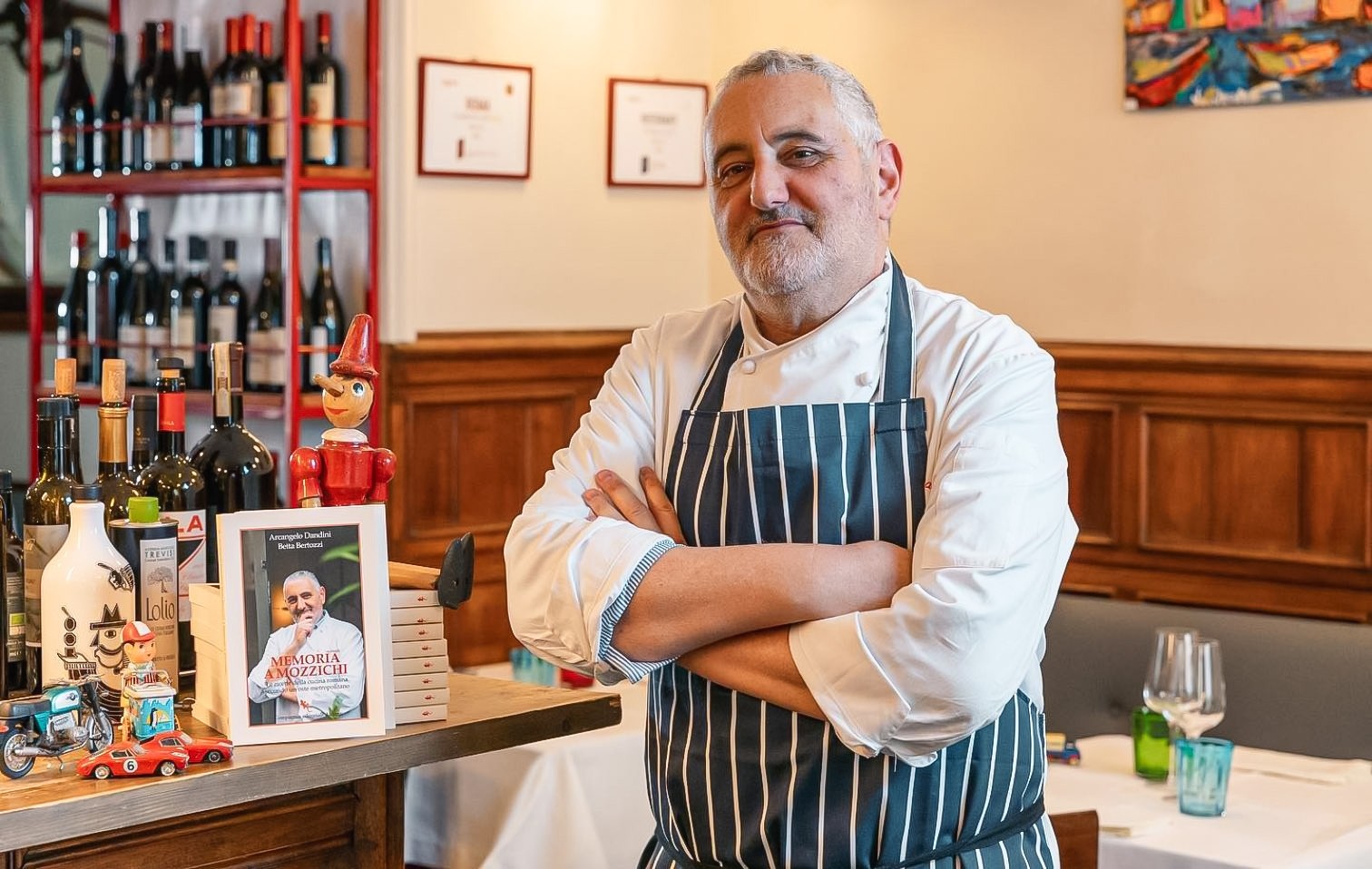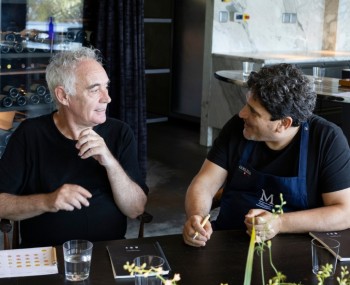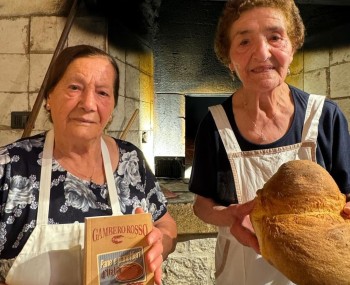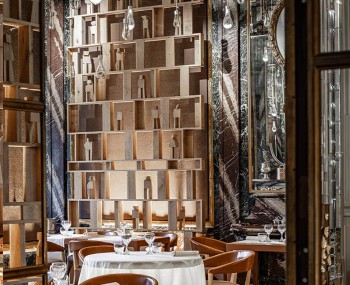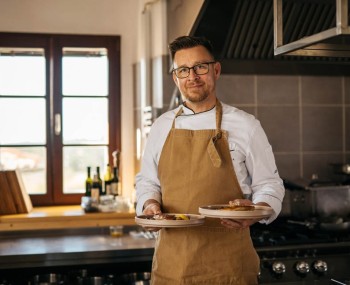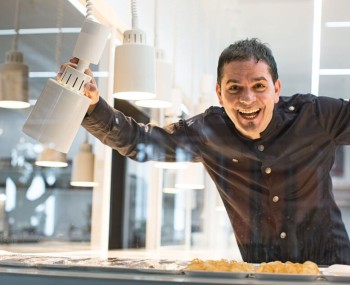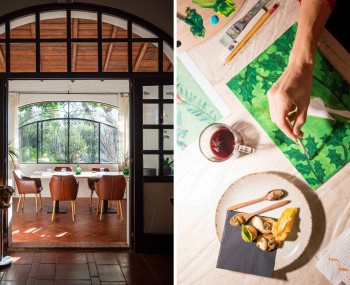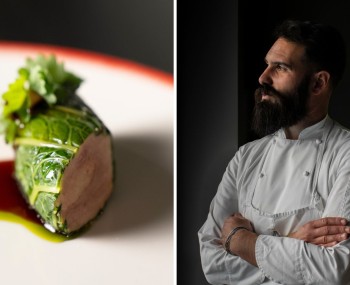With L'Arcangelo's offering, Dandini encapsulates the expertise of five generations of restaurateurs and the history of Roman culinary tradition, successfully embodying the roles of host, chef, and thriving entrepreneur.
The story
It's challenging to find words that don't sound repetitive for an institution like Arcangelo Dandini. An eclectic and theatrical character, a passionate advocate of Roman culinary traditions, he was born in 1962 in Rocca Priora, a small village in the Castelli Romani. Tradition, in the broadest and most complex sense of the term, synonymous with culture, curiosity, and the ability to synthesize memories passed down from generation to generation to get to the root of the original idea to perpetuate it correctly or express it in one's own way.
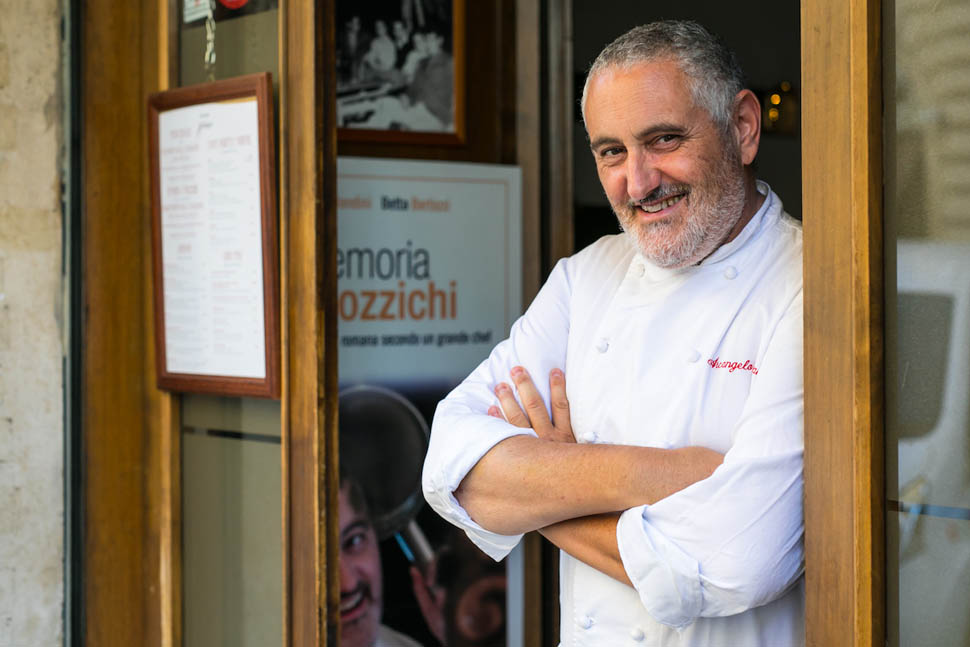
"I am in favor of interpretation, but to change or update the rules, you must know them well," Dandini asserts convincingly, and not many can claim to know them as well as he does. He breathed in the smells and moods of the kitchen from a young age in the family's historic restaurant: "We slept upstairs, but most of the time, we spent it downstairs, where, in addition to the 400-square-meter kitchen, unthinkable today, there was a 70-square-meter prep kitchen with a beautiful fireplace, television, and a sofa," he recalls.
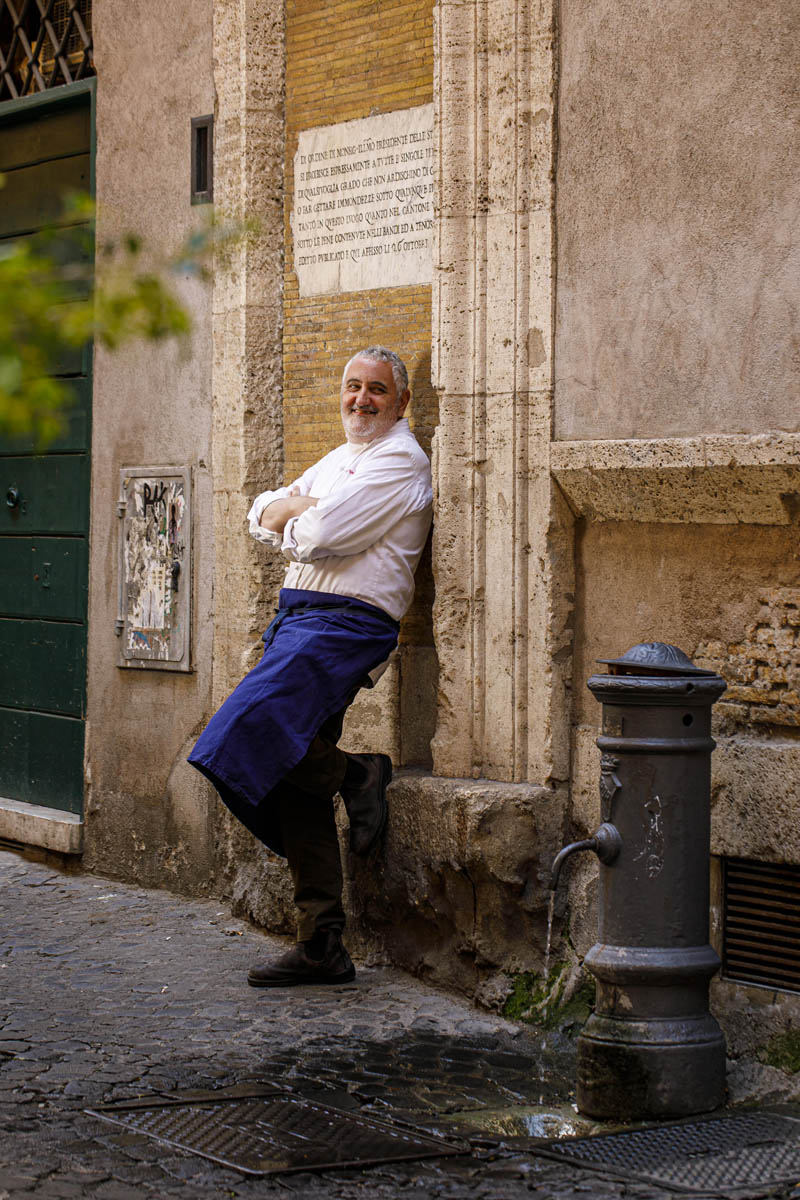
A cook by direct appointment but a host by vocation: "The kitchen is often confused with catering. I always felt more like a host than a cook because hospitality is everything. If you don't feel comfortable in a place, you can't appreciate even the best of chefs," he emphasizes. Author of books like "Memoria a Mozzichi," where he retraces the origins of Roman cuisine with an historical overview ranging from recipes of the imperial Rome to the well-known Testaccio cuisine, passing through Jewish cuisine and the banquets of the Renaissance popes. Another book, "Animelle," is a journey into memories to discover one's own kitchen, with explicit reference to a part of the fifth quarter among the most famous and divisive, corresponding to the thymus, a gland located in the neck of young sheep and cattle.
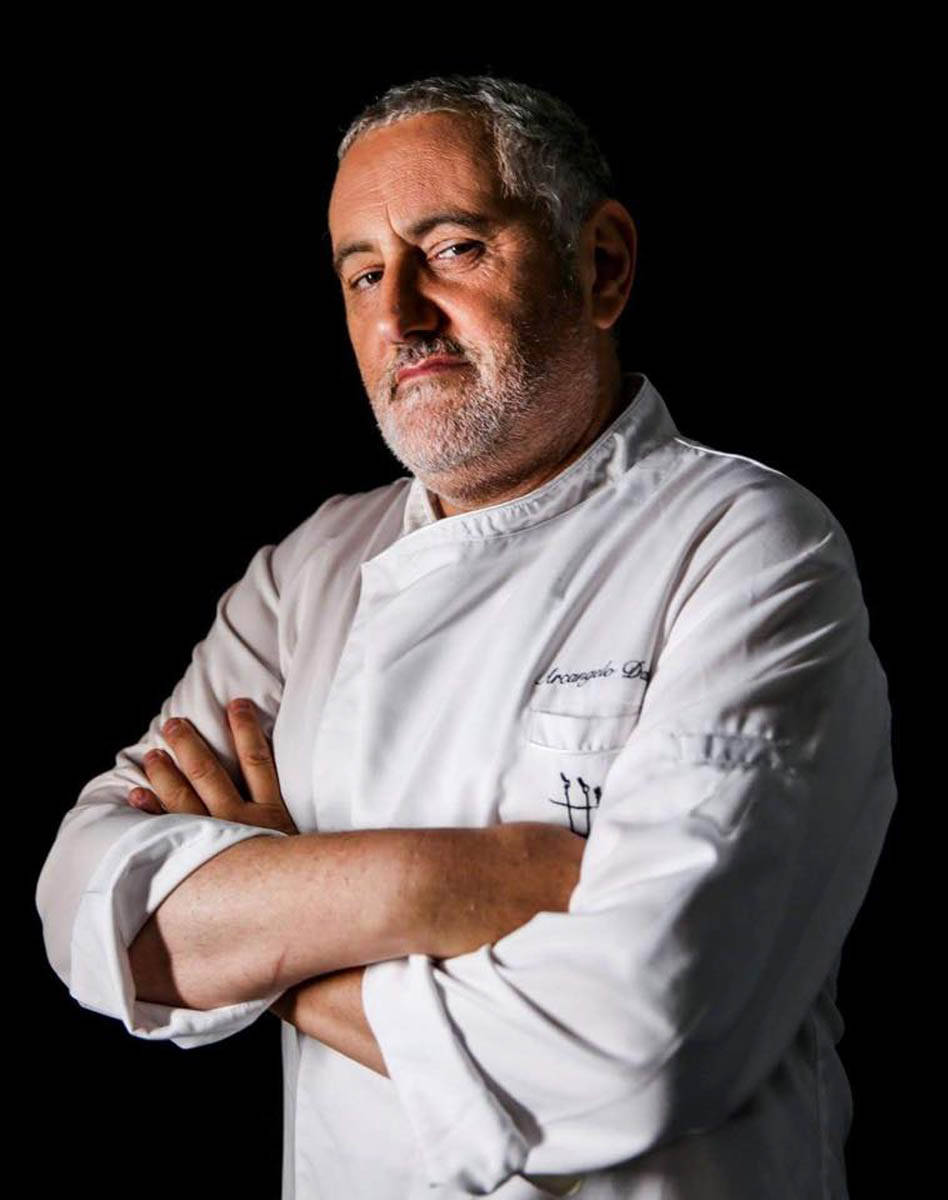
He has important and formative experiences behind him, such as the one with Aimo Moroni in Milan between 1987 and 1990, then at Melograno in Ischia and Viareggio, until the most significant one in 1997 as the director of the Simposio, a wine bar ahead of its time attached to the Enoteca Costantini in Piazza Cavour. It became a legend over the years as a meeting place for the greatest figures in the world of gastronomy, from Heinz Beck to Benigni, from Ligabue to Vizzari, passing through the great Italian and French producers who wanted to showcase their wines, now rare collector's items. If the experience at Simposio allows Dandini to sew the label of host onto himself, thanks also to the support of a young and promising Gabriele Bonci in the kitchen, the opening of the L’Arcangelo restaurant in June 2003 allowed him to be appreciated in all his skills: host, chef, and entrepreneur.

Following that project, others came, notably Supplizio, a rustic and welcoming fry shop like those of the past, with two locations, one in the city center and the other inside the Central Market of Rome. "After a setback, it is starting to function again. Just think that in October 2023, we recorded a 30% increase compared to 2019, the best year," explains Dandini.

The idea was born to celebrate and give more prominence to the supplì, the Roman street food for excellence, and to all those "street bites" that are part of popular culture, such as crispy cod or smoked potato croquettes, presented in a modern key. Less popular in terms of price but focused on the absolute quality of the ingredients used, which are also available for purchase in the venue.

Following Supplizio, Chorus opened in the second half of 2021, an imposing, multifaceted, and multifunctional space just steps from St. Peter's Basilica, where the chef manages the room and the gastronomic offering of an already established and functioning venue, thanks to an exceptional cocktail bar with the experience of a legend in mixology, Massimo D’Addezio. Also in the same period, Garum restaurant opened in London, relying on Arcangelo Dandini to bring Italian and Roman cuisine to London, with the idea of creating a modern trattoria "halfway between L’Arcangelo and Supplizio," offering a product-focused cuisine centered on the typical recipes of the Capital, from carbonara to gricia, from meatballs to tripe, not forgetting supplì and street food.
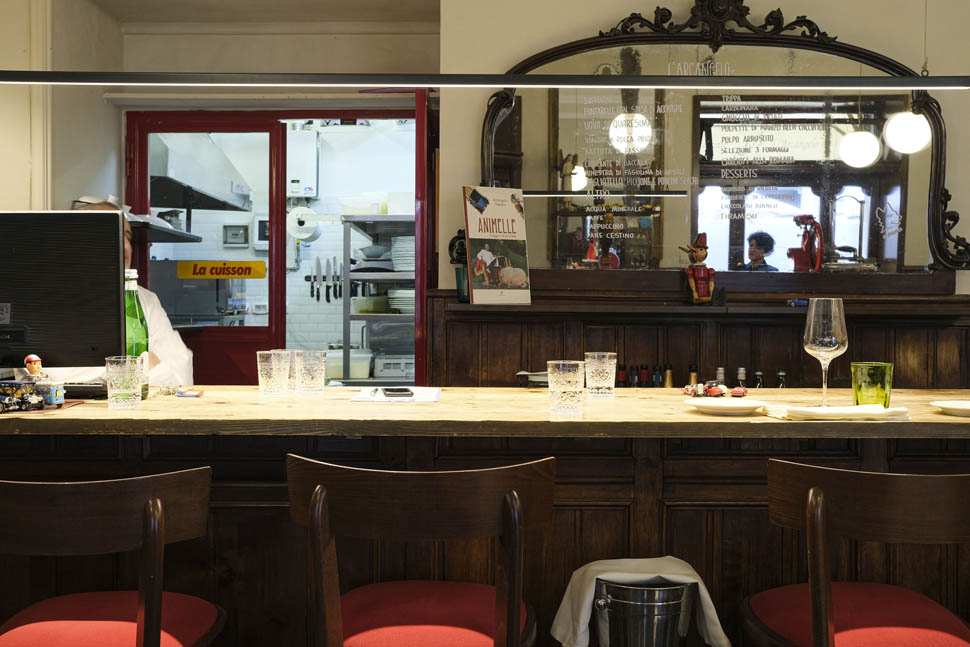
The restaurant
L’Arcangelo is located a few steps from Piazza Cavour, inside an historic venue, among the first to be granted a liquor license after the First World War. It presents itself as a classic Roman trattoria, lively and welcoming, perhaps due to the standard white tablecloth and wooden chairs, closely spaced tables, the wooden and marble counter in front of the entrance where you can eat, complete with a Berkel on one side and a vintage scale on the other. But there's more: "The name of the restaurant comes from the two cherubs depicted on one of the walls," the chef explains. "We hadn't found a name for the venue yet, and we had to open soon, so a friend of mine suggested calling it L’Arcangelo, inspired by that image. It was left as a legacy by the owner of the walls, a kind of good luck charm, like the photo from 1924 showcasing wine carts in Piazza della Signoria in Florence, where alcohol consumption was celebrated".
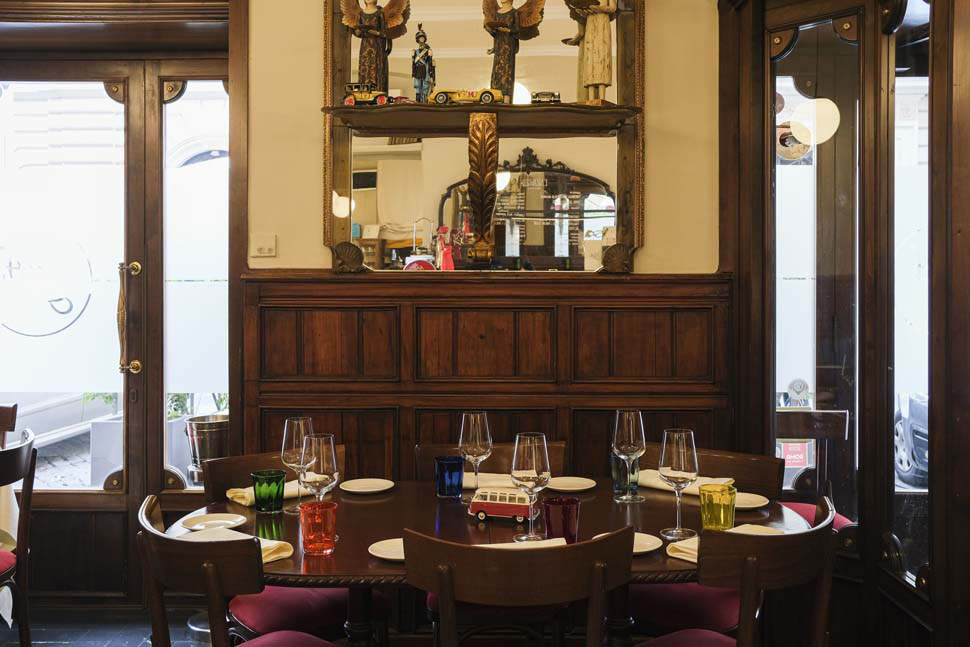
The extra touch mentioned earlier is therefore attributable to a mix of culture, memories, and historical tales: primarily those of the Dandini family, with many photos on the walls recounting its main milestones, such as the restaurant in Rocca Priora: "In 1967/1968, we had about 1600 chickens, and women from the surrounding areas would come to make fresh pasta: lasagna, cannelloni, ricotta and spinach ravioli, fettuccine with ragù, there was no trace of typical Roman dishes because people were used to eating them at home," the chef recalls. "On Sundays, we served about 1500 covers. I remember that my father, to accommodate everyone, asked people to bring their own chairs. What is now called the 'chef table' was invented by my parents in those years without realizing it, as they often had people sit at our table due to a lack of other space, with the open kitchen."
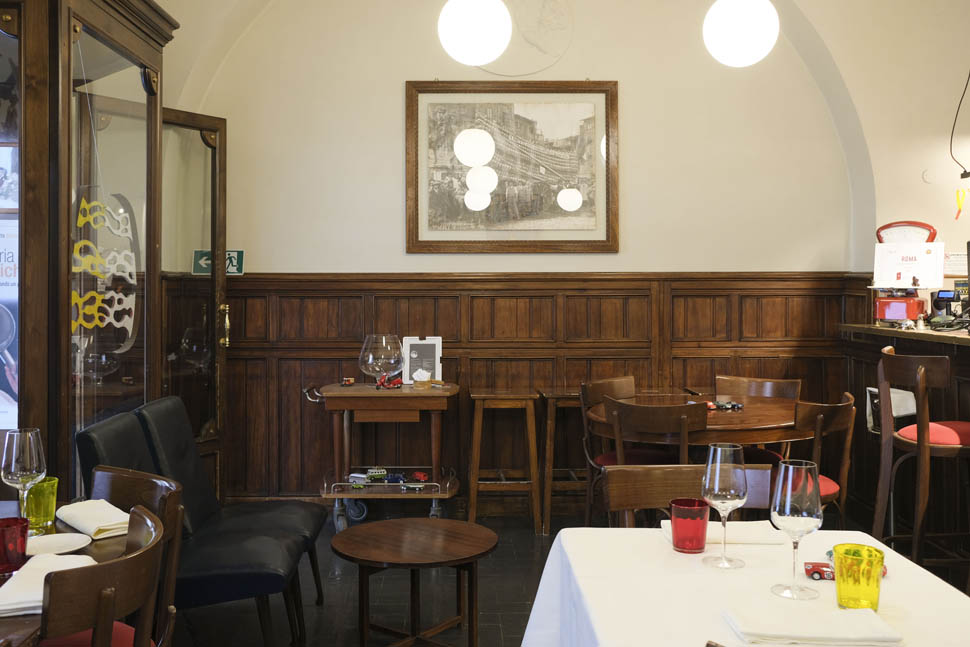
There are also Liberty mirrors, the tricycle above the entrance door, or the many toy cars scattered on the tables, indelible traces of a simple, probably normal childhood but capable of deeply marking the sensitivity and character of a chef who, despite his gruff appearance, can engage guests as only humble and substantial people can. His cuisine precisely and detailed reflects his being: the menu dishes are those of Roman tradition but translated in a cultured and contemporary way. "I wouldn't cook like my parents; the dishes need to be reviewed and lightened. To do this, it is useful to have state-of-the-art equipment, but with fire, a knife, and a pan, you can do everything," he explains.
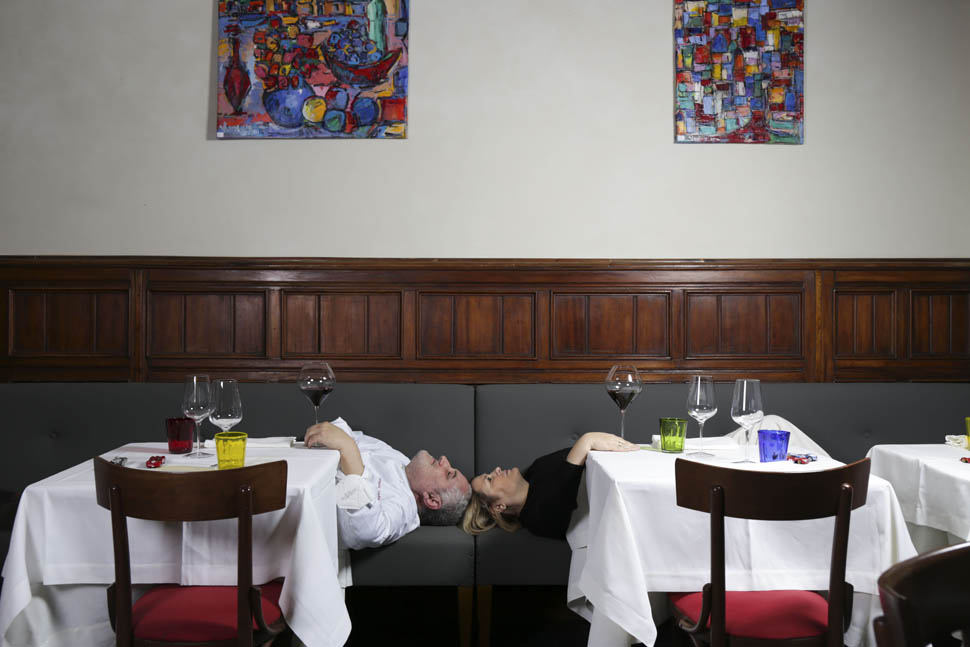
So, modernization that is not based on whim or riding the current trend but roots itself in the history of those recipes, in their origins, in why they were prepared in a certain way and not in another. Thus, each dish tells a story, an anecdote, or reproduces a family classic born by chance or necessity and handed down for five generations. "Very often, recipes are born this way. Our whole job is based on the need of the moment, for example, to reduce waste or recover scraps." All this results in a perfect synthesis of past and present, where the research and selection of ingredients to use play a leading role, enhanced to the fullest because they are functional to the purpose, never unnecessary or processed more than necessary.
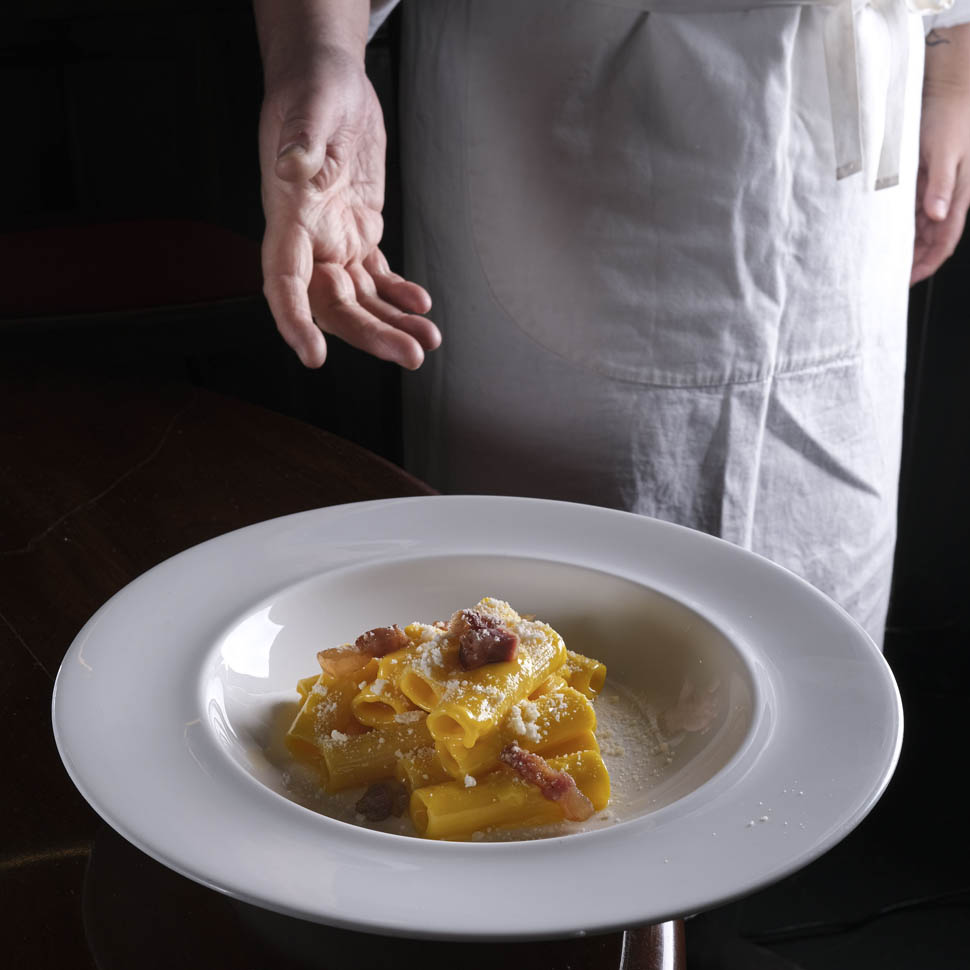
The dishes
Perhaps the dish that best showcases the above is the "Journey to Rocca Priora," a manifesto of Dandini's cuisine for twenty years, a narrative of an articulated and precise identity path: poached egg seasoned with spices, wild herbs, pollen, and sour cherry juice. The egg symbolizes birth, the herbs are iconic of the territory: "Mrs. Regina has always collected them, a knowledgeable woman from the village whom I trust blindly. I wouldn't even know how to recognize all of them with a biology course," the chef confesses. The pollen celebrates the first job as a fourteen-year-old beekeeper, and the sour cherries recall the tree outside the house in the countryside, always a source of delicious fruits.
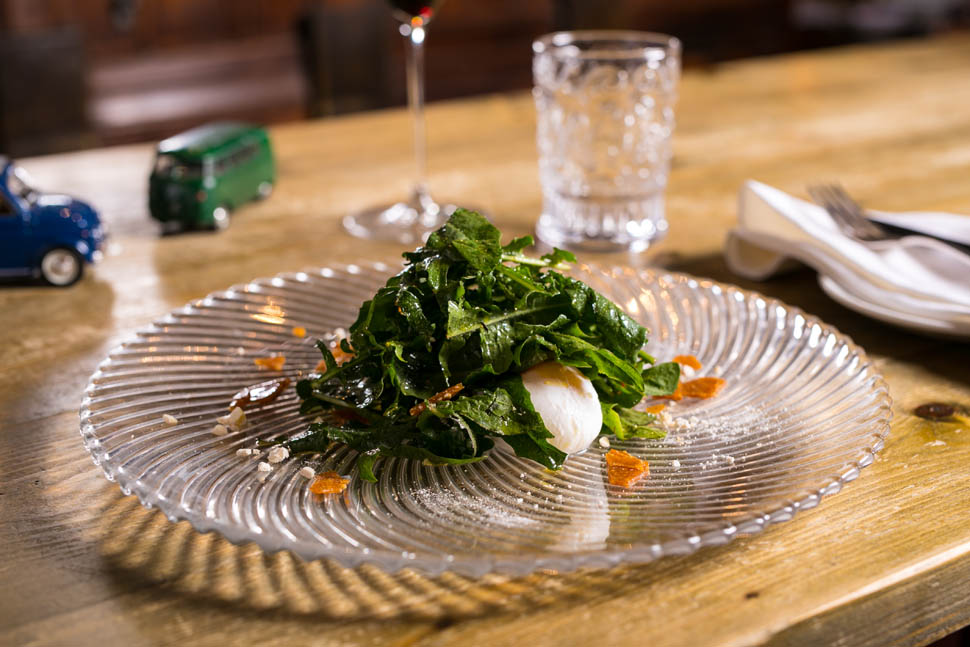
Next is the smoked potato croquette and the crispy cod with exceptional breading, accompanied by caper mayonnaise, paying homage to the street food so dear to our host and inspiring the idea of Supplizio, like the Roman arancino, with porcini mushrooms, chicken giblets, and fennel "because my mother made it that way." Among the first courses, the "Ravioli with Alife onion, my garum, butter, and Parmigiano" a tasty and comforting dish, a tribute to Bartolomeo Scappi, the private chef of at least two popes, who in his treatise "Opera," one of the most comprehensive gastronomy books ever written dating back to the second half of the 1500s, tells in-depth about the lesser-known recipes of papal and princely cuisine, including the onion dish. In this case, the chef uses various spices, saffron, and vinegar for the filling, then dresses the ravioli with butter and Parmigiano and seasons them with his idea of garum, a Roman-origin sauce made with small gutted fish left to marinate in salt for a long time, reinterpreted sentimentally with garlic, anchovies, rosemary, and honey "because this way, it seems like I'm uniting two eras, the Roman and my childhood," he explains.

In his version of "carbonara," as explained on the menu, Dandini doesn't use pepper "because it's a historical falsehood; in the original recipe prepared by shepherds during transhumance, it wasn't used," nor egg white "because otherwise, it would be too protein-rich." The guanciale is also cooked at low heat and cut thickly: "To respect the proportion of two lean parts and one fatty," not thin as the current trend would suggest. Finally, the pasta, produced by a Puglian pasta factory that uses only ancient grains and dries it slowly at 38 degrees, is served warm to fully appreciate its flavor and aromas.
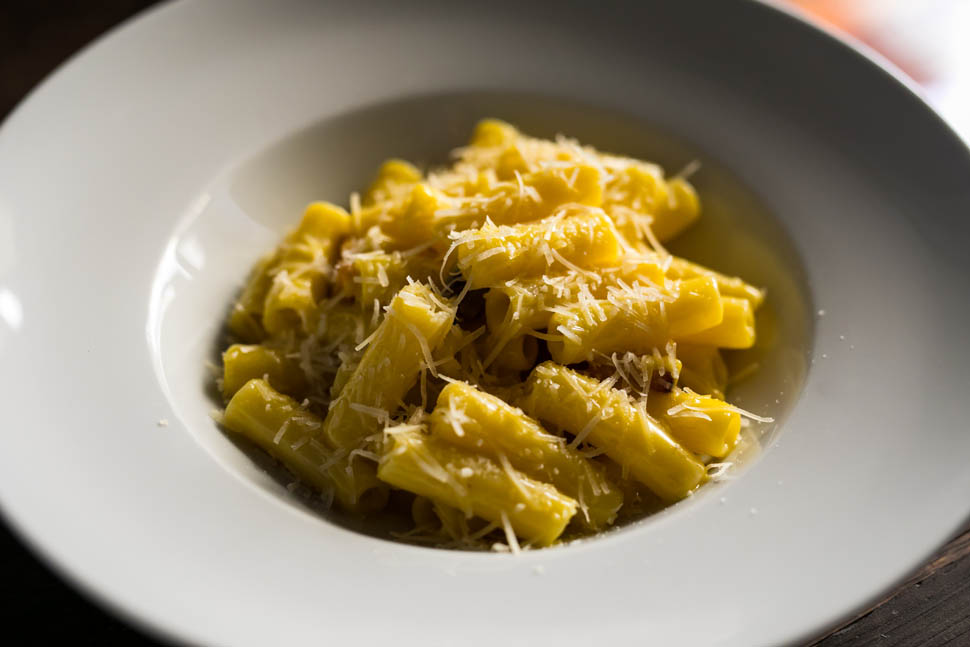
The "Risotto with chicken giblets, dried porcini, and bay leaves" looks more like a rice dish since it is not creamed in a classic way: "I want the taste of the giblets to be more pronounced than the fat," explains Dandini. There's a raw egg and very little oil because "quantity doesn't matter, quality does." It is followed by a enjoyable taste of "Scarpetta di coda alla vaccinara," two slices of homemade bread, very good, flavorful, and with a significant crust, topped with dark chocolate shavings: "I prefer chocolate to the cocoa usually used in the recipe; I find it too sweet," explains the chef, and a melt-in-your-mouth oxtail, cooked very well and for a long time, for about 6 hours, to be scooped up with the bread.
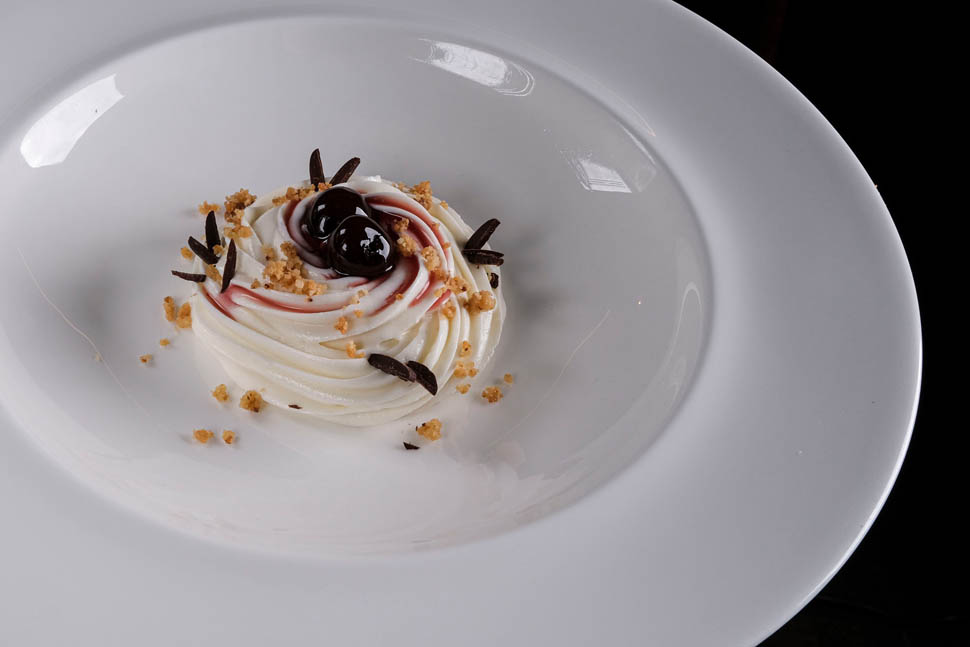
The dessert is surprising, light-years away from what one would expect after such a journey: "Liquid white chocolate, English cream, oil, capers from Salina, and candied ginger," the result of an in-depth study of flavors, tastes, and textures that makes everything incredibly balanced: "This dessert came about by chance. I am very fond of white chocolate, and that day I ate it after the seared tuna with capers, and I immediately liked the contrast, the taste that remained in my mouth. So, I started working on the missing acidity that I found in ginger, but candied, otherwise, it would be too bitter," the chef recounts.
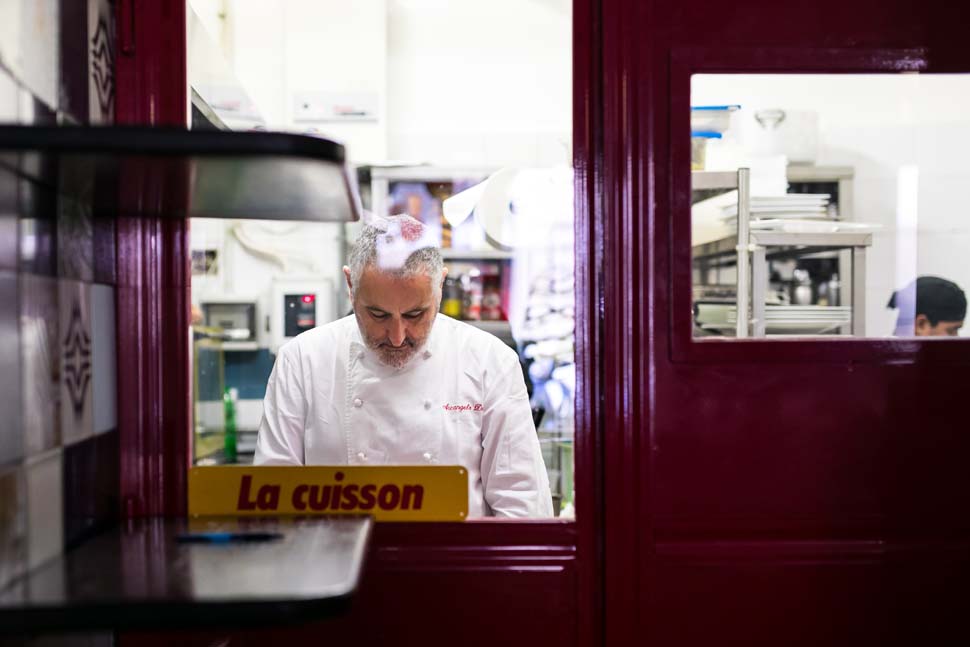
The wine list is also surprising, not for its breadth but for the careful selection of labels from small producers because "handing down implies dynamism," emphasizes the chef. This brings excellent references to the cellar that often rotate, from sparkling wines to champagnes, to white wines from all over Italy, including natural and biodynamic ones. The Lazio selection is very attentive, and there is also Germany and France, not only Burgundy and the Loire but also Alsace and Provence. The selection of red wines is broader, especially from Tuscany and Piedmont, then Burgundy, Rhône, and Bordeaux, completing a well-organized wine list capable of satisfying all needs. The service adapts perfectly to the context, being courteous and informal.
Address
L'Arcangelo
Via Giuseppe Gioachino Belli, 59, 00193 Rome RM
Phone: 06 321 0992
Website
